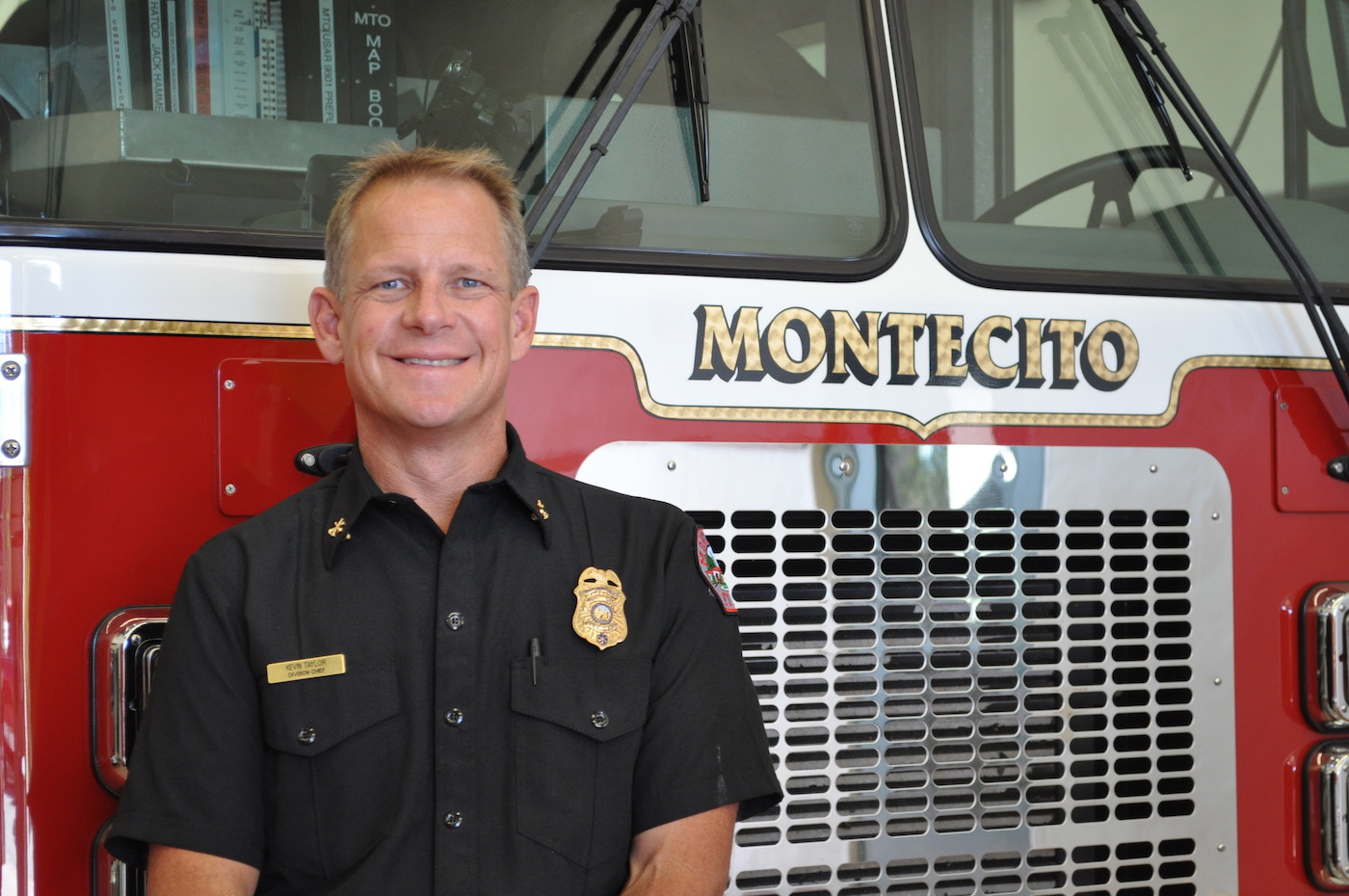Fire Chief Kevin Taylor on This Year’s Fire Season

Back in January, a standing-room-only crowd filled Montecito Union School’s auditorium for an update on what to expect this year in terms of both fire and rain. The message was exactly what residents were hoping to hear. First, a lower than average chance of the kind of rain events that could lead to another debris flow, and second, the healthy recovery of vegetation that was destroyed by the 2017 Thomas Fire.
Of course, the flipside of that good news – having so much hillside chapparal and other plant life grow back – is the possibility that it will once again catch fire. Given that Santa Barbara’s typical fire season is about to begin and much of California is already on fire, we figured this would be a perfect time to catch up with Kevin Taylor, Montecito’s Fire Chief, for an update on what we can expect for the rest of the year.
Q. So far, Montecito seems to be miraculously spared from the fires ravaging the state. How is Montecito looking right now in terms of current fire risk?
A. Before we had a year-round fire season, like we do now, our typical fire season would last from August through October, and the reason for that is that all the vegetation that grows during the winter and spring dries up during the summer and once the live fuel moisture index gets below 60 percent, that represents a very high fire risk. Our current index is in the 70s. We will get the August numbers in the next several days, and I suspect that the number will be in the high 60s.
So far, so good. But what kind of weather can we expect during the next few months? We are supposed to have another heat wave this weekend.
Right now, the forecast is a little unsure of exactly how much of a heat wave we’ll actually get, but this is the time of year we tend to experience the hottest weather, and we’re seeing some chance of the kind of monsoon conditions that have been responsible for fires elsewhere in California. But the second reason we should be prepared is because we are now entering our second sundowner season [when evening winds often rush down the mountains].The strongest sundowners usually happen in the spring, but we can have very strong events in the late summer and early fall, which is also the primary Santa Ana wind season for Ventura and Los Angeles Counties.
What’s the best thing residents can do to prepare?
As we move into the heart of the fire season, we’re urging everyone to follow our “Ready! Set! Go!” guidelines. “Ready” means the creation of defensible space around the home and clearing out any flammable items and vegetation. “Set” means creating and being ready to implement a family disaster plan for what you need to do when there actually is a fire.
“Go” stands for knowing what to expect if you are evacuated. We have a very robust program that’s available on our website (click on the “Ready! Set! Go!” tab at www.montecitofire.com). We also sent out a 10-page booklet to every home in the community which is featured prominently on our website. And if anyone has any questions or concerns, we have two wildland specialists, Nick Elmquist and Maeve Juarez, who will visit your home and provide a complimentary defensible space survey.
There have been a lot of helicopters flying around town and it’s been reported that they belong to SoCal Edison and involve some kind of fire-related preparations. Can you confirm that?
Yes, SCE has been using helicopters and drones to evaluate their electrical infrastructure for the past six weeks or so. They’ve been looking at how much clearance there is between their wires and vegetation, which they are required to do in very high fire areas every year by the Public Utilities Commission.
How has the Fire Department been affected by California’s ongoing conflagration this summer? Are you guy assisting with any of the forest fires right now?
Absolutely. We’ve had 14 of our firefighters assigned throughout the state for the last 15 days and are in the process of rotating them out so that another group can go out. But while we are out there helping our neighbors like they helped us during the Thomas Fire, we remain fully staffed and ready to respond to any events that might happen in the community.
So, to sum up, is it fair to say that, as things stand, it appears like we might survive the rest of this year’s fire season without any major problems?
I’ll always stop short of saying we have no risk, but our risk for a large, damaging wildfire is less right now because the fuel is not receptive to burn the way it did during the Thomas Fire. The coastal chapparal in Los Padres National Forest takes 12 years to cure and become susceptible to large, damaging fires.
The western edge of the Thomas Fire, where we were able to actually stop the fire, was in the Tea Fire scar. We could take meaningful action there because it was a 12-year-old fuel bed, whereas the area that burned was a 50-year-old fuel bed and we had an unheard-of weather pattern of 12 straight days of fire conditions that you just don’t see in December, but we did. So we always need to be careful in our community and not think we don’t have any fire risk, because with the type of weather we might get, it’s always there.






